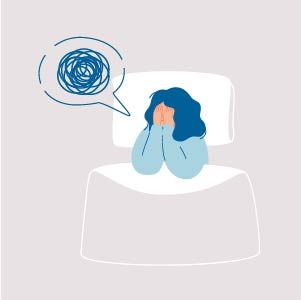News
Article
Study Explores Effects of Sleep Robot Intervention on Patients With ADHD and Insomnia
Author(s):
The study explored the intervention’s effects using both quantitative and qualitative methods.
Mary Long_AdobeStock

A study explored the individual effects of a sleep robot intervention in adults with comorbid attention-deficit/hyperactivity disorder (ADHD) and insomnia.
In the study, investigators combined quantitative and qualitative methods to observe how individuals with this comorbidity would respond to the Somnox sleep robot, a device designed to enhance sleep using sensory stimulation.1
“The first randomized waitlist-controlled study on the effects of the sleep robot in adults with insomnia showed no statistically significant effects on a group level,” the investigators stated. “Considering the neurochemical and anatomical overlap in sleep, arousal, and attention, it is possible that the robot might have greater effects in adults with comorbid ADHD and insomnia. The sleep robot might also benefit adults with ADHD, as it is easy to use and does not demand the ability to stay focused throughout a cognitive behavioral therapy (CBT) program.”1
The investigators recruited 6 participants (4 female, 2 male) aged 18 years and older who had previously been diagnosed with ADHD and screened them for insomnia severity using the Insomnia Severity Index (ISI), for comorbid sleep disorders using the Duke Structured Interview for Sleeping Disorders (DSISD), and for psychiatric disorders using the Mini International Neuropsychiatric Interview (M.I.N.I.). After receiving training on how to operate the sleep robot, participants were instructed to use the sleep robot while in bed before falling asleep and if they woke up during the night at home for 21 days.1
For the quantitative analysis (a repeated ABA single-case design), the investigators measured outcomes for sleep efficiency, sleep onset latency, wake after sleep onset, and total sleep time based on participant entries in the Consensus Sleep Diary for 6 consecutive weeks. They also measured somatic arousal using the Pre-Sleep Arousal Scale (PSAS); symptoms of depression and anxiety using the Hospital Anxiety and Depression Scale (HADS); and ADHD using the Adult ADHD Self-Report Scale (ASRS)—all before the intervention, after the intervention, and at 1-month follow-up.1
For the qualitative portion, the investigators conducted in-depth individual interviews with the participants about their experience with the sleep robot and with the intervention as a whole. Using a thematic analysis analytical approach, the investigators analyzed the material in 6 phases:1
- Reading and rereading the interviews to gain familiarity with the content
- Analyzing the material inductively for the core topics and then coding the topics
- Relating codes into the preliminary themes identified
- Reviewing the themes
- Naming and defining the final themes
- Choosing the extracts and creating the report
The quantitative visual analysis of the sleep diary and actigraphy variables did not suggest that the robot interview had any effect. Only half of the participants reported clinically relevant reductions based on their ISI scores from pre- to post-intervention, and there were no changes in arousal or ADHD symptoms. The qualitative analysis had similarly mixed results, as patients reported having both positive and negative experiences with the sleep robot in their interviews. The investigators ultimately identified 69 codes and 3 themes: “a pleasant companion,” “too much/not enough,” and “a new routine.”1
“On the positive side, the robot was referred to as both pleasant and a good companion—even a substitute for human contact for those living by themselves,” the investigators stated. “On the other hand, the robot did not meet the expectations of all participants, and was experienced as too big or too small, too noisy or too quiet, too hard or too soft, etc. It was also a challenge for participants to start and maintain a new routine of using the robot every night and to have to log their sleep over an extended period of time.”1
The investigators recommended that future research explore the ways stimulus control, sleep hygiene, and sleep restriction may be affected when psychoeducation is included in the intervention. They also suggested comparing the effects of the sleep robot with those of weighted blankets.“To conclude, the effects of the sleep robot intervention were mixed,” the investigators stated. “More studies must be conducted on a modified version of the intervention before it can be recommended to adults with ADHD and insomnia in clinical settings.”1
Read the full study here, and see more coverage of new research on ADHD, sleep disorders, and more at psychiatrictimes.com.
Reference
1. Støre SJ, Tillfors M, Angelhoff C, Norell-Clarke A. A robot intervention for adults with ADHD and insomnia-a mixed-method proof-of-concept study. PLoS One. 2023;18(9):e0290984.
Newsletter
Receive trusted psychiatric news, expert analysis, and clinical insights — subscribe today to support your practice and your patients.






